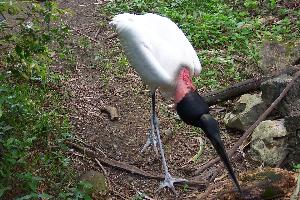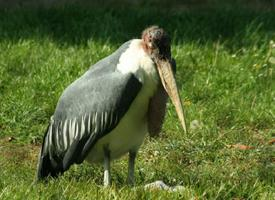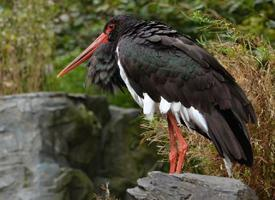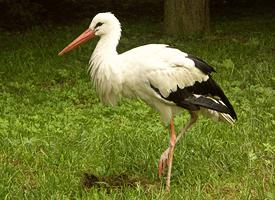
Váhy a míry
| Výška v kohoutku | od 95 do 105 cm |
|---|---|
| Hmotnost | od 2,3 do 4,4 kg |
| Délka rozpětí křídel | od 155 do 165 cm |
Biologická data
| Počet mláďat | 2 - 4 |
|---|
Popis zvířete
The White Stork (Ciconia ciconia) is a large, majestic bird known for its striking appearance and significant presence in folklore and mythology across various cultures. This bird species is easily recognizable by its long legs, long neck, and particularly long, straight beak, all of which are adapted for its feeding habits. The adult White Stork's plumage is predominantly white, with black on the bird's wings that is especially visible during flight. The contrast between the white body and black wing feathers, along with its red beak and legs, makes the White Stork a visually striking bird.White Storks are migratory birds with a wide range that spans across Europe, North Africa, and parts of Asia. They are known for their long migratory journeys between breeding grounds in Europe and wintering areas in Africa, covering thousands of kilometers in the process. These birds prefer open meadows, wetlands, and farmlands as their habitats, where they can forage for food. Their diet primarily consists of insects, fish, amphibians, reptiles, small mammals, and occasionally small birds.
One of the most fascinating aspects of the White Stork is its nesting behavior. These birds are monogamous and often return to the same nest year after year, with both males and females participating in building and maintaining the nest. Nests are typically located on rooftops, chimneys, trees, or specially constructed platforms, and can become quite large as they are added to year after year. White Storks are known for their social nature, especially during the breeding season, when they can be found nesting in close proximity to one another, forming small colonies.
The breeding season for White Storks begins in spring when they return to their European breeding grounds. The female lays between two to five eggs, which are then incubated by both parents for about a month. Once hatched, the chicks are fed by both parents until they are ready to fledge, about two months later. The young storks spend a few weeks learning to fly and forage before beginning their migration southward.
White Storks have a significant place in human culture and mythology. In many cultures, they are symbols of good luck, fertility, and the harbinger of spring. The image of a stork carrying a newborn baby in its beak is a popular folklore in many Western cultures, representing the delivery of new life. Additionally, the return of the White Stork to Europe in spring is a welcome sign of the changing seasons.
Conservation efforts for the White Stork have seen varying degrees of success across its range. Habitat destruction, pollution, and collisions with power lines pose significant threats to the species. However, conservation programs, including the creation of artificial nesting sites and the protection of key habitats, have helped stabilize and even increase some populations. The White Stork's adaptability to human-altered landscapes has also aided its survival, making it a familiar and cherished presence in many of its range countries.
In summary, the White Stork is not only an iconic species due to its distinctive appearance and fascinating behaviors but also holds a deep cultural significance for many people. Its presence across diverse landscapes and its role in ecosystems highlight the importance of ongoing conservation efforts to ensure that this remarkable bird continues to thrive for generations to come.
Mapa výskytu
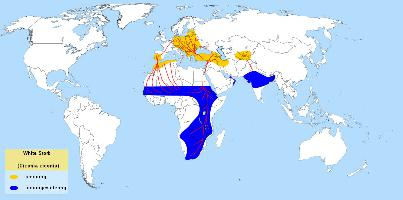
Podobná zvířata
Nové fotografie zvířat
Top 10 zvířat
- Common cockchafer (Melolontha melolontha)
- Common house mosquito (Culex pipiens)
- Colossal squid (Mesonychoteuthis hamiltoni)
- Giant house spider (Eratigena atrica)
- Harpy eagle (Harpia harpyja)
- Fruit fly (Drosophila melanogaster)
- Common reed warbler (Acrocephalus scirpaceus)
- Australian box jelly (Chironex fleckeri)
- Proboscis monkey (Nasalis larvatus)
- Moustached guenon (Cercopithecus cephus)
